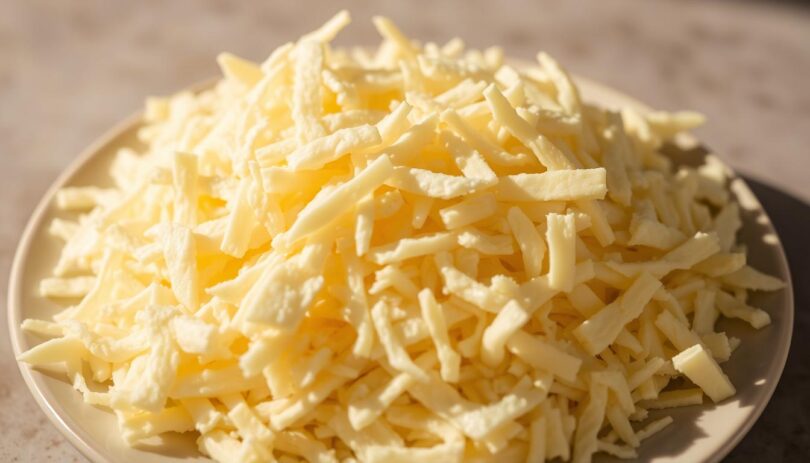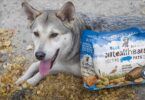Over 65% of pet owners admit sharing human food with their furry companions, yet few understand how dairy impacts canine health. Mozzarella, a mild and low-fat cheese, often sparks curiosity among those seeking safe snack alternatives. But what’s the verdict?
Veterinarians agree: this dairy product can be a safe occasional reward when served responsibly. Packed with protein and calcium, it offers nutritional benefits that support bone strength and muscle function. However, portion control remains critical—even low-fat options add calories quickly.
Not all pets process lactose equally. While many tolerate small amounts, some puppies and adult animals experience digestive discomfort. Owners should introduce new foods gradually and watch for signs like bloating or diarrhea.
Trainers frequently recommend using shredded mozzarella as a high-value incentive during obedience sessions. Its soft texture also makes it ideal for concealing medication. Still, moderation is key to avoiding weight gain or long-term health issues.
This section explores how to balance nutritional advantages with potential risks. Learn practical tips for portion sizes, allergy detection, and safer treat alternatives in the following guide.
Understanding Dog Nutrition and Cheese Benefits
Balanced nutrition plays a pivotal role in maintaining a dog’s vitality and well-being. Certain human foods, when carefully selected, can supplement their diet with valuable nutrients. Cheese, for instance, provides protein for muscle maintenance and calcium to support strong bones.
Essential Nutrients in Dairy Treats
High-quality varieties contain vitamins like A and B-complex, which promote healthy skin and energy metabolism. Low-fat options such as cottage cheese are particularly favored by trainers due to their digestibility. These ingredients also help mask medications, making them practical for reluctant pets.
Rewards That Drive Results
Small cheese cubes work wonders during obedience drills, offering motivation without excessive calories. The key lies in selecting low-sodium types to avoid unnecessary strain on a pet’s kidneys. Owners should always monitor portions, especially for puppies with developing digestive systems.
While many animals tolerate dairy well, lactose intolerance varies between individuals. Introducing new treats gradually helps identify sensitivities early. Prioritizing cheese safe for pets ensures treats remain both enjoyable and beneficial.
Key Considerations: Moderation, Fat, and Lactose
Pet owners often wonder about balancing tasty rewards with nutritional safety. While many animals enjoy dairy snacks, two critical factors demand attention: fat levels and lactose tolerance.
Impact of High-Fat Content and Weight Gain
Rich varieties pose hidden dangers. Excess fat contributes to obesity, straining joints and organs. In severe cases, pancreatitis develops—a painful inflammation requiring urgent vet care.
Even low-fat options add calories quickly. A single ounce contains 6-8 grams of fat. Regular overfeeding disrupts balanced diets, creating long-term health problems.
Managing Lactose Intolerance in Dogs
Digestive systems vary widely. Some pets lack enzymes to break down milk sugars. Symptoms like gas or loose stools signal intolerance.
Introduce dairy slowly. Start with pea-sized portions and wait 24 hours. If reactions occur, consider lactose-free alternatives. Always prioritize protein sources that align with dietary needs.
Consulting a veterinarian helps tailor treat plans. They can recommend safer options for sensitive stomachs while maintaining nutritional balance.
Can dogs eat mozzarella cheese
Choosing the right treats requires understanding how different varieties affect pets. Mild options often work best for sensitive stomachs, but hidden risks exist in some dairy products.
Mozzarella Versus Other Cheeses
Soft varieties like mozzarella contain less fat than cheddar or cream cheese. This makes them gentler on digestion when served sparingly. Blue cheese poses serious dangers due to Roquefortine C—a toxin causing vomiting and tremors.
Processed types often include additives like garlic or onion powder. Always check ingredients before sharing. Fresh mozzarella’s simplicity reduces risks compared to aged or flavored options.
Safe Feeding Practices for Mozzarella
Start with thumbnail-sized portions once weekly. Monitor for signs like excessive thirst or loose stools. These may indicate lactose sensitivity.
Use shredded pieces as training rewards rather than daily snacks. Combine with high-fiber foods to balance calorie intake. Never let treats exceed 10% of daily meals to maintain proper weight.
Consult your vet if unusual symptoms appear. They can recommend lactose-free alternatives or adjust portion sizes based on your pet’s needs.
Practical Guidelines for Incorporating Cheese in Your Dog’s Diet
Integrating dairy snacks into your pet’s routine requires careful planning and awareness. When used strategically, these treats can reinforce positive behaviors without disrupting nutritional balance. Focus on quality, portion size, and individual tolerance to create a safe reward system.
Portion Control and Frequency of Treats
Limit cheese to 1 teaspoon per 10 pounds of body weight daily. For small breeds, this equals roughly a pea-sized piece. Low-sodium cottage cheese works well for sensitive stomachs due to its reduced lactose content.
Offer these snacks 2-3 times weekly during training or medication routines. Pair them with high-protein meals to maintain dietary equilibrium. Always subtract treat calories from regular meals to prevent weight gain.
Monitoring Your Dog’s Reaction to Cheese
Watch for itching, vomiting, or diarrhea within 24 hours of introduction. Lactose-intolerant pets may need lactose-free alternatives. Keep a food journal to track portions and reactions over time.
Adjust serving sizes based on activity levels and age. Senior animals often require smaller portions. Consult your veterinarian if digestive problems persist despite moderation.
Exploring Alternative Cheeses and Treat Options
Variety matters when selecting dairy rewards for pets. While some options offer nutritional perks, others hide risks that demand careful evaluation. Smart choices balance taste with health priorities.
Smart Picks for Sensitive Systems
Low-lactose varieties like cottage cheese provide calcium without digestive stress. Soft goat cheese serves as another gentle option, offering protein and vitamins. These lower-fat alternatives help maintain healthy weight levels while satisfying cravings.
Always check labels for additives. Some products contain harmful toxic ingredients disguised as flavor enhancers. Fresh, unprocessed types minimize exposure to unnecessary sodium or preservatives.
Dangerous Dairy to Sidestep
Blue cheeses and seasoned varieties often contain mold or onion powder—substances that trigger vomiting or organ damage. High-sodium options like feta strain kidneys, especially in older animals.
Introduce new treats slowly. Start with half-teaspoon portions weekly, watching for reactions like diarrhea or lethargy. Pair small cheese bits with fiber-rich vegetables for balanced snacking.
Consulting a veterinarian ensures personalized recommendations. They can assess individual tolerance and suggest supplements if dairy proves problematic.
Final Pointers for Canine Health and Cheese Treats
Balancing safety and enjoyment starts with smart choices. While mozzarella offers a mild option for occasional rewards, moderation remains non-negotiable. Stick to thumbnail-sized portions and watch for digestive changes like gas or loose stools—common signs of lactose intolerance.
Always avoid blue cheese and seasoned varieties containing toxic additives. Safer picks like cottage cheese provide similar benefits with lower lactose levels. Prioritize fresh, unprocessed types to minimize sodium and fat intake.
Consulting a veterinarian ensures personalized guidance, especially for pets with dietary sensitivities. Track reactions in a food journal to spot patterns early. Treats should complement meals, not replace balanced nutrition.
By staying informed and observant, owners can turn cheese into a tool for training and bonding. Thoughtful decisions protect long-term wellness while keeping tails wagging.
FAQ
Is mozzarella safe for lactose-intolerant pets?
While mozzarella has lower lactose than many cheeses, some pets still struggle to digest dairy. Start with tiny portions and watch for signs like gas or loose stools. Low-lactose options like cottage cheese may be better tolerated.
How does mozzarella compare to cheddar or Swiss for dogs?
Mozzarella typically contains less sodium and fat than aged cheeses like cheddar, making it a safer occasional treat. However, always check labels for additives or excess salt, which can harm pets.
Can puppies have small amounts of cheese?
Puppies’ digestive systems are sensitive, so introduce dairy cautiously. Opt for bland, low-fat varieties and avoid seasoning. Consult a vet before adding new foods to a young dog’s diet.










Leave a Comment